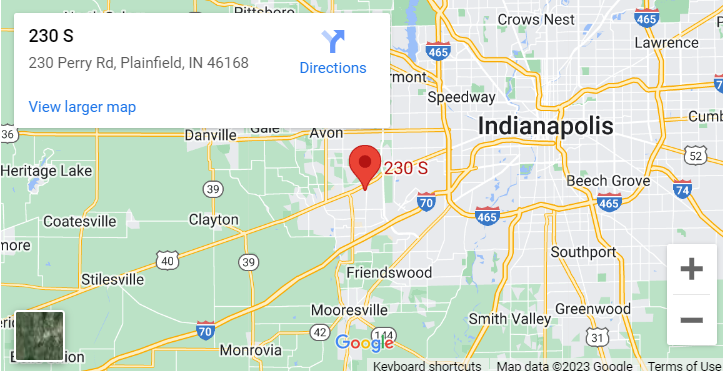Traditional cybersecurity is dead. There, I said it. You know that castle-and-moat approach your organization has been using? The one where you trust everything inside your network and block everything outside? It’s failing spectacularly, and the breach statistics prove it. That’s where the Zero Trust Security Model Explained becomes critical for every business leader who’s tired of playing defense with yesterday’s playbook.
Look, I’ve worked with companies that thought their firewalls were bulletproof. They’ve learned the hard way that modern threats don’t respect perimeters. Remote work, cloud services, and sophisticated attack methods have shattered the old security assumptions. Here’s the deal: Zero Trust isn’t just another buzzword—it’s a complete rethink of how we protect digital assets.
Key Takeaways
- Never trust, always verify is the core principle that replaces automatic network trust
- Zero Trust requires continuous authentication and authorization for every user and device
- Implementation involves identity management, network segmentation, and least-privilege access controls
- The model reduces breach impact by limiting lateral movement within networks
- Successful deployment requires cultural change, not just technology upgrades
What Is the Zero Trust Security Model Explained
Zero Trust flips traditional security on its head. Instead of trusting users and devices once they’re inside your network, Zero Trust assumes everything is potentially compromised. Every request gets verified. Every user gets authenticated. Every device gets checked.
The concept isn’t new—John Kindervag at Forrester coined the term back in 2010. But it’s taken a pandemic and countless breaches for organizations to finally pay attention. The basic premise? Trust is a vulnerability.
Core Principles That Drive Zero Trust
Three fundamental principles anchor every Zero Trust implementation:
- Verify explicitly – Authenticate and authorize every transaction using multiple data points
- Use least-privilege access – Limit user access to only what they need for their specific role
- Assume breach – Design your security architecture expecting that threats are already inside
These aren’t suggestions. They’re requirements. I’ve seen organizations try to cherry-pick elements of Zero Trust, and it doesn’t work. You’re either committed to the model or you’re not.
Why Traditional Security Models Fail
Traditional perimeter security made sense when employees worked in offices and applications lived in data centers. But that world doesn’t exist anymore. Consider these realities:
Remote workers access company resources from coffee shops, home networks, and airport lounges. Cloud applications scatter your data across multiple providers. Third-party vendors need system access. Mobile devices connect from everywhere.
The old model creates a massive blind spot. Once an attacker breaches your perimeter, they can move laterally through your network with minimal resistance. The average data breach takes 287 days to identify and contain, according to IBM’s Cost of a Data Breach Report. That’s nearly 10 months of unrestricted access.
How Zero Trust Architecture Actually Works
Zero Trust isn’t a single product you can buy and install. It’s an architectural approach that touches every aspect of your security infrastructure. Let me break down how it operates in practice.
Identity and Access Management (IAM)
Everything starts with identity. In a Zero Trust model, identity becomes your new perimeter. You need to know who’s requesting access, from what device, at what time, and from which location.
Modern IAM solutions use multi-factor authentication (MFA), behavioral analytics, and risk-based authentication. They’ll flag unusual login patterns, require additional verification for high-risk activities, and continuously monitor user behavior.
Here’s what robust identity verification looks like:
- User attempts to access a resource
- System checks multiple authentication factors
- Risk engine evaluates the request context
- Access is granted, denied, or requires additional verification
- Session is continuously monitored for anomalies
Network Segmentation and Micro-Segmentation
Traditional networks are flat. Zero Trust networks are compartmentalized. Micro-segmentation creates secure zones around individual applications, services, or user groups.
Think of it like building fire doors throughout a skyscraper. If one area gets compromised, the damage stays contained. An attacker who breaches your email system can’t automatically pivot to your financial applications.
Software-defined perimeters (SDP) and secure access service edge (SASE) technologies make this segmentation possible without destroying user experience. Users get seamless access to authorized resources while unauthorized lateral movement becomes nearly impossible.
Device Trust and Endpoint Security
Every device is a potential attack vector. Zero Trust requires device attestation—proving that endpoints meet security standards before granting network access.
Device trust evaluation includes:
- Operating system patch levels
- Antivirus status and definitions
- Encryption compliance
- Application whitelist adherence
- Behavioral analysis results
Devices that don’t meet standards get quarantined or receive limited access until they’re compliant. It’s strict, but necessary.
Implementation Challenges and Real-World Solutions
I’ll be straight with you—implementing Zero Trust isn’t easy. Organizations face technical, cultural, and financial obstacles that can derail the entire initiative.
The Cultural Resistance Problem
Zero Trust changes how people work. Users accustomed to seamless network access suddenly face authentication prompts and access restrictions. IT teams trained on perimeter security need new skills and mindsets.
Change management is crucial. I’ve watched technically sound Zero Trust projects fail because leadership didn’t address the human element. You need executive sponsorship, clear communication about security benefits, and training programs that help staff adapt.
Legacy System Integration
Your 15-year-old ERP system wasn’t designed for Zero Trust. Neither was that manufacturing control system or the facilities management software. Legacy applications often can’t support modern authentication protocols or encrypted communications.
Solutions include:
- Identity proxy services that add authentication layers
- Network-based controls for systems that can’t be modified
- Gradual migration strategies that prioritize high-risk systems
- Risk acceptance for end-of-life systems with compensating controls
Vendor and Third-Party Access
Zero Trust gets complex when external parties need system access. Contractors, vendors, and partners all require different access levels and security controls.
The NIST Zero Trust Architecture publication recommends treating external users with even stricter controls than internal staff. That means separate authentication systems, time-limited access, and enhanced monitoring.
Measuring Zero Trust Success
How do you know if your Zero Trust implementation is working? You’ll need specific metrics that go beyond traditional security dashboards.
Security Metrics That Matter
| Metric | Target Range | Why It Matters |
|---|---|---|
| Mean Time to Detection (MTTD) | < 24 hours | Faster threat identification reduces damage |
| Authentication Success Rate | > 95% | Measures user experience impact |
| Lateral Movement Incidents | Approaching zero | Core Zero Trust effectiveness measure |
| Policy Violations per Month | Decreasing trend | Indicates improving security posture |
Business Impact Assessment
Security metrics only tell half the story. You also need to measure business impact. Are users more or less productive? Have customer-facing services improved or degraded? What’s the total cost of ownership compared to your previous security model? Additionally, understanding the effectiveness of your cybersecurity measures requires an analysis of how these changes affect overall organizational resilience. By examining metrics alongside business impact, organizations can better shape their ransomware protection strategies to not only defend against threats but also enhance operational efficiency. This holistic approach ensures that security investments align with broader business goals and contribute to sustained growth.
I recommend tracking incident response costs, compliance audit results, and user satisfaction scores. Zero Trust should reduce security incidents while maintaining or improving user experience.
Continuous Improvement Process
Zero Trust isn’t a destination—it’s a journey. Threat landscapes evolve. Business requirements change. Your security model needs to adapt accordingly.
Establish quarterly reviews that examine:
- New threats and attack vectors
- Changes in business operations
- Technology upgrades and replacements
- Policy effectiveness and user feedback
- Compliance requirement updates
The CISA Zero Trust Maturity Model provides a framework for continuous assessment and improvement.
Conclusion
The Zero Trust Security Model Explained isn’t just another IT project—it’s a fundamental shift in how organizations approach cybersecurity. Traditional perimeter-based security can’t protect against modern threats, remote work realities, and cloud-first business models.
Zero Trust requires commitment, resources, and patience. It’s not a quick fix or a single product purchase. But organizations that embrace the model see reduced breach impact, improved compliance posture, and better security visibility.
The question isn’t whether you’ll implement Zero Trust—it’s whether you’ll do it proactively or after your next major security incident forces your hand. Start with identity management, focus on your highest-risk assets, and build gradually. Your future self will thank you.
FAQ
How long does Zero Trust implementation typically take?
Most organizations need 18-36 months for full Zero Trust Security Model Explained implementation. The timeline depends on your current security maturity, legacy system complexity, and available resources. Start with high-impact, low-complexity projects to build momentum and demonstrate value.
What’s the biggest mistake organizations make with Zero Trust?
Treating Zero Trust as a technology project instead of a business transformation. I’ve seen companies buy Zero Trust products without changing policies, processes, or culture. The technology is only as effective as the people and procedures supporting it.
Can small businesses implement Zero Trust?
Absolutely. Small businesses often have advantages—fewer legacy systems, simpler networks, and more agile decision-making. Cloud-based Zero Trust solutions make the model accessible without massive infrastructure investments. Focus on identity management and cloud application security first.
How much does Zero Trust cost compared to traditional security?
Initial costs are typically higher due to new technology investments and training requirements. However, long-term costs often decrease due to reduced breach incidents, simplified compliance, and consolidated security tools. Calculate total cost of ownership over 3-5 years, not just first-year expenses.



